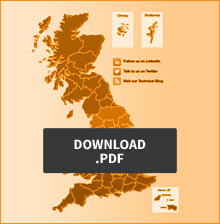Understanding the wider challenges of fire compliance in flat roof design

There is plenty of guidance available for architects and specifiers on roofing compliance for fire safety. However, what can easily be overlooked is understanding key stakeholder requirements and ensuring the design aligns to their goals too. In this blog, we cover off four key checks architects should consider in the design process and how to best manage them.
- Identify stakeholders and their fire strategies.
We highly recommend early engagement with key stakeholders such as fire officers and insurers who will have their own requirements. Not doing so increases the risk of needing to spend time and money redesigning the solution to achieve approvals. Work with these stakeholders early to identify what their fire strategy is early and incorporate it into the design.
Fire officers will potentially have their own approach to passive and active fire safety as well as the specification for the products in the build. Insurance companies will also have a view on product specification aimed at bettering building legislation.
For example, some insurers will only permit non-combustible materials on the projects they insure, even though a BROOF(t4) build-up incorporating combustible products would still comply with Part B of the Building Regulations. The specification of completely non-combustible products, particularly insulation, has become more prevalent because of this. In short, insurers are further mitigating their risk, by going over and above what the legislation demands.
- Determine the fire testing requirements
There has been an increase in the incidence of fire offices asking for project-specific fire test for roof build ups. Typically, data from indicative tests would be sufficient however it is worth checking if a fire test is required for this project.
This higher demand is placing more pressure on fire testing facilities, resulting in the typical two-month lead time increasing to six months. Early engagement with SIG D&T can help this through design specification and understanding the testing facilities to ensure the process is as smooth as possible.
- Understand the implications of compliance on design detail
One possible knock-on effect of product specification is how this affects design best practice. For example, non-flammable insulation typically has increased depth compared with flammable equivalents. As a result, it’s harder to achieve best practice design for door thresholds and upstands.
Achieving compliance in Building Regulations is already challenging due to their complexity and onerousness. The additional demands of insurers and fire officers means that the design and specification process is becoming a minefield. The team at SIG D&T is perfectly placed to help balance the need for design best practice within the parameters of fire compliant specification.
- Check the status of your Professional Indemnity Insurance
Be aware that some insurance companies have been removing fire cover from architects’ PI insurance. As a result, that responsibility is being passed on by the architect to the materials supplier to ensure the appropriate fire cover is in place. It can result in having to inform the client that some design aspects are not protected without the intervention of a third party to assume responsibility. This could be the contractor or fire engineer. It’s new territory and one to be acutely aware of as there is the potential for an architect to be personally liable in the absence of cover.
By understanding these four critical factors and adopting the approach of early engagement with key stakeholders and SIG D&T, you can manage and design an appropriate fire compliant design.
To find out about more fire specification and compliance, please contact your SIG D&T Account Manager or alternatively you can email us [email protected] or call 01509 505 714














https://leedsanddistrictroofingservices.co.uk/
Great post from sig again i have used this company for many years